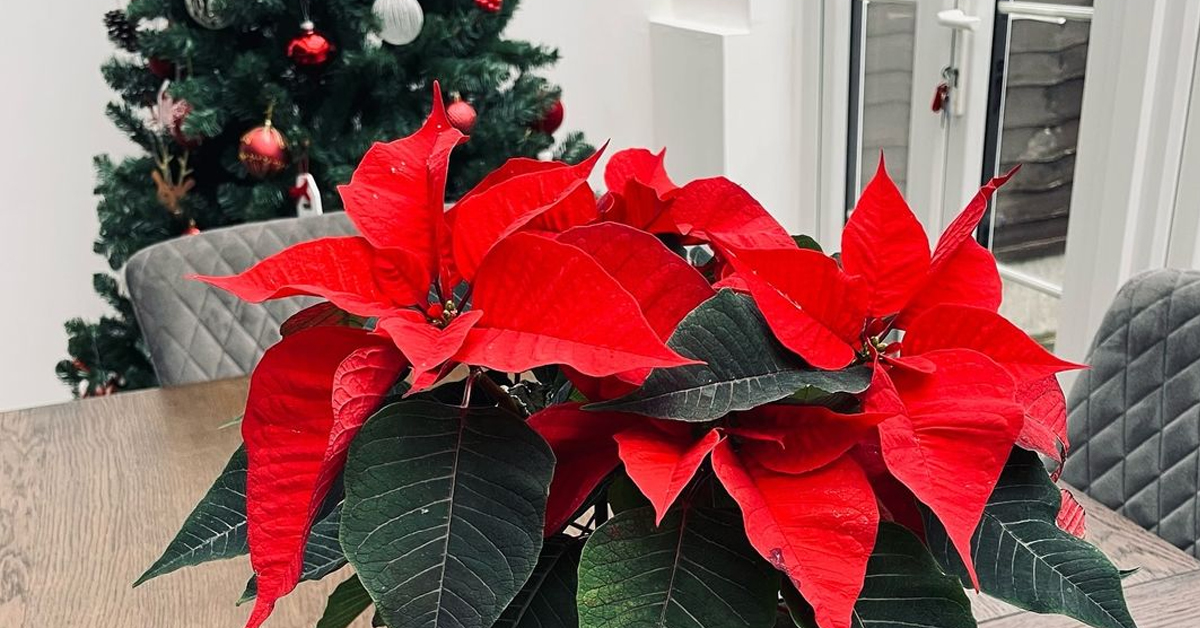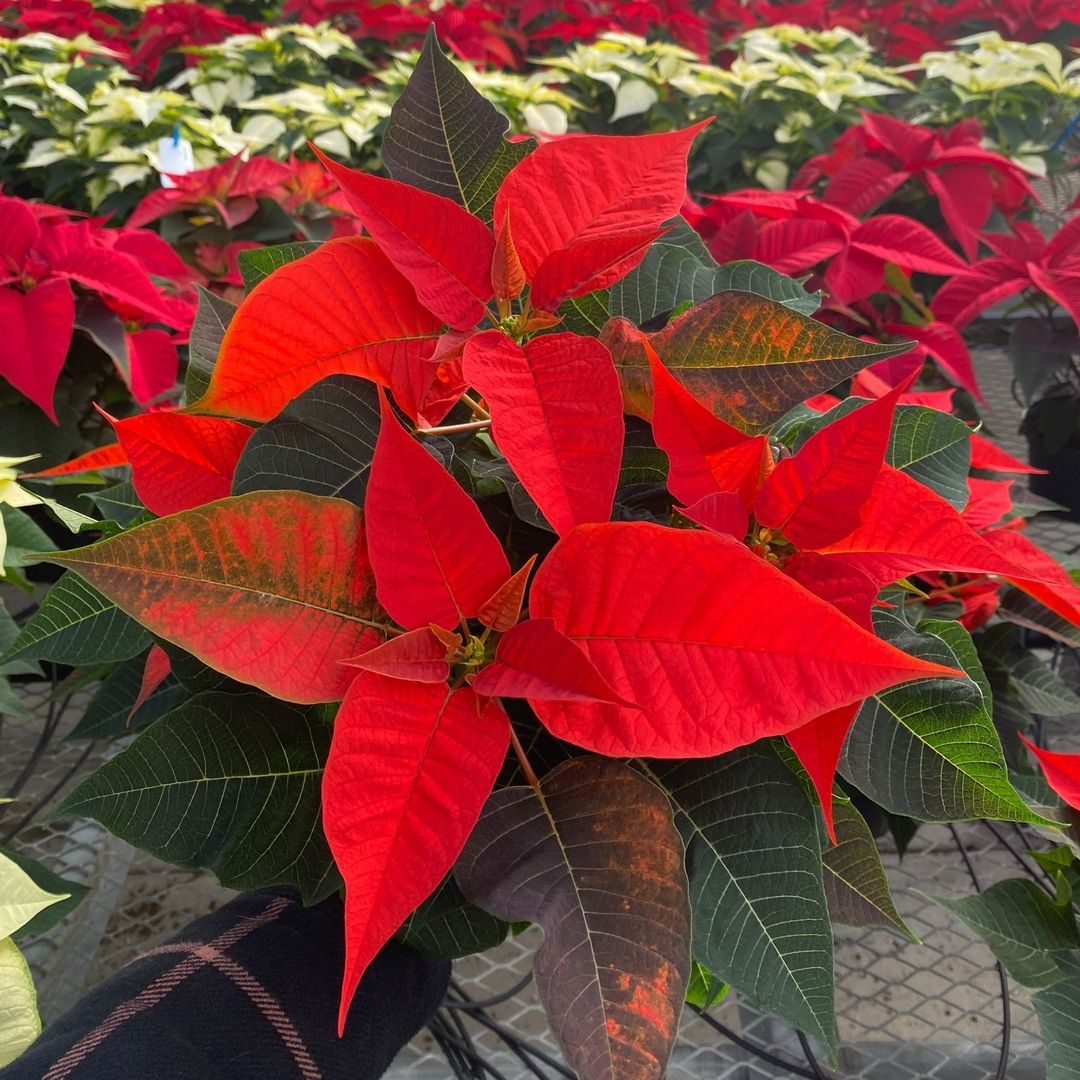Poinsettias are a popular Christmas plant known for their bright red and green foliage. However, once the holiday season is over, many people are left wondering what to do with their poinsettias. Do they throw them away? Can they be kept alive until next year? In this article, we will explore the different options for what to do with poinsettias after Christmas.
One option is to keep the poinsettia as a houseplant. With proper care, poinsettias can continue to grow and even bloom again next year. According to Gardening Know How, poinsettias need day temperatures between 65 and 70 degrees Fahrenheit and slightly cooler temperatures at night. They also require regular watering until spring, then gradually drying out. However, it is important to note that getting a poinsettia to bloom again can be a difficult and time-consuming process.
Another option is to compost the poinsettia. Composting is an environmentally friendly way to dispose of the plant and can provide nutrient-rich soil for future gardening projects. However, it is important to remove any foil or plastic wrapping from the pot before composting. These materials can take a long time to decompose and can harm the environment.
Assessing Poinsettia Health After Christmas
After the holiday season, it’s essential to assess the health of your poinsettia. The first step is to check for any signs of wilting or yellowing leaves. If you notice any, it may be a sign of overwatering or underwatering.
To assess the soil moisture level, stick your finger about an inch into the soil. If it feels dry, it’s time to water your poinsettia. However, if it feels moist, wait a few more days before watering again. Overwatering can lead to root rot, while underwatering can cause the leaves to wilt and fall off.
Another critical factor to consider is the amount of light your poinsettia is receiving. Poinsettias need bright, indirect light to thrive. If your plant is not getting enough light, the leaves may turn yellow and fall off. On the other hand, too much direct sunlight can cause the leaves to scorch and turn brown.
It’s also essential to check for any signs of pests or diseases. Common pests that can affect poinsettias include spider mites, whiteflies, and mealybugs. If you notice any signs of infestation, isolate the plant and treat it with an appropriate insecticide.
Finally, it’s crucial to remove any decorative foil or wrapping around the pot. This will allow excess water to drain properly and prevent the roots from sitting in standing water.
Continued Care and Maintenance
Poinsettias are beautiful plants that can last well beyond the holiday season with proper care and maintenance. In this section, we will discuss the key elements to keep your poinsettia healthy and thriving in the months to come.
Watering Schedule
It’s important to maintain a consistent watering schedule for your poinsettia. Overwatering can lead to root rot, while underwatering can cause the plant to wilt and die. We recommend watering your poinsettia when the soil feels dry to the touch, but not completely dry. Be sure to allow excess water to drain from the pot to prevent standing water.
Proper Lighting
Poinsettias require bright, indirect light to thrive. Direct sunlight can scorch the leaves and cause them to fall off. We recommend placing your poinsettia near a window that receives bright, indirect light for at least six hours a day. If you don’t have a suitable window, you can use a grow light to provide the necessary light.
Temperature Control
Poinsettias prefer a warm, humid environment with temperatures between 65 and 70 degrees Fahrenheit during the day and slightly cooler at night. Avoid exposing your poinsettia to cold drafts or temperatures below 50 degrees Fahrenheit, as this can cause the leaves to turn yellow and fall off.
Yyou can keep your poinsettia healthy and beautiful for months to come.
With proper care and maintenance, your poinsettia can continue to brighten up your home long after the holiday season has ended.
Post-Holiday Pruning
After the holiday season, it is important to prune your poinsettia to ensure its health and promote future growth. Pruning can help to maintain the plant’s shape and size, as well as encourage the growth of new branches and leaves. In this section, we will discuss the pruning techniques and timing for pruning your poinsettia.
Pruning Techniques
When pruning your poinsettia, it is important to use sharp, clean shears to avoid damaging the plant. Begin by removing any dead or damaged branches or leaves, cutting them back to the main stem.
This will help to prevent the spread of disease and pests. Next, trim back the remaining branches to the desired size and shape. It is important to leave at least 3-4 leaves on each branch to ensure that the plant can continue to photosynthesize and produce energy.
Timing for Pruning
The best time to prune your poinsettia is in late winter or early spring, after the holiday season has ended. This will give the plant time to recover and regrow before the next holiday season. However, if your poinsettia has become too large or leggy, it may be necessary to prune it back in the fall to prevent it from becoming too unruly.
Pruning your poinsettia after the holiday season is an important step in maintaining its health and promoting future growth.
By using the proper pruning techniques and timing, you can ensure that your poinsettia will continue to thrive and bring joy for many holiday seasons to come.
Reblooming Process
If you want your poinsettia to bloom again next year, you will need to follow a specific reblooming process. This process involves inducing dormancy and then resuming growth.
Inducing Dormancy
To induce dormancy in your poinsettia, you will need to follow these steps:
- Starting in mid-September, provide your poinsettia with 14 hours of complete darkness each day. You can achieve this by covering the plant with a box or placing it in a closet.
- During the day, place your poinsettia in a sunny spot and water it regularly.
- Continue this process for 8-10 weeks until you see new growth emerging from the stems.
Resuming Growth
Once new growth has emerged, you can resume normal care for your poinsettia. Follow these steps:
- Move your poinsettia to a sunny spot and water it regularly.
- Fertilize your poinsettia with a balanced, all-purpose fertilizer every two weeks.
- Pinch back the stems of your poinsettia in early summer to encourage bushier growth.
By following these steps, you can successfully rebloom your poinsettia next year.
Alternative Uses for Poinsettias
If you don’t want to throw away your poinsettia after Christmas, there are a few alternative uses for it. Here are some ideas:
Composting
Poinsettias can be added to a compost pile as a source of nitrogen. However, it’s important to remove any foil or plastic wrapping before adding it to the compost. Poinsettias can also be added to a worm bin as a food source for worms.
Crafts and Decor
Poinsettias can be used in a variety of crafts and decor projects. Here are a few ideas:
- Dried poinsettia petals can be used to make potpourri or added to homemade soap.
- Poinsettia leaves and stems can be used to make wreaths or added to floral arrangements.
- Poinsettia flowers can be pressed and used to make greeting cards or framed art.
When using poinsettias in crafts and decor projects, it’s important to handle them carefully as the sap can be irritating to the skin. It’s also important to keep them away from pets as they can be toxic if ingested.
While poinsettias are often associated with the holiday season, they can still be useful long after the holidays are over. By composting or using them in crafts and decor, we can extend the life of these beautiful plants and reduce waste.


